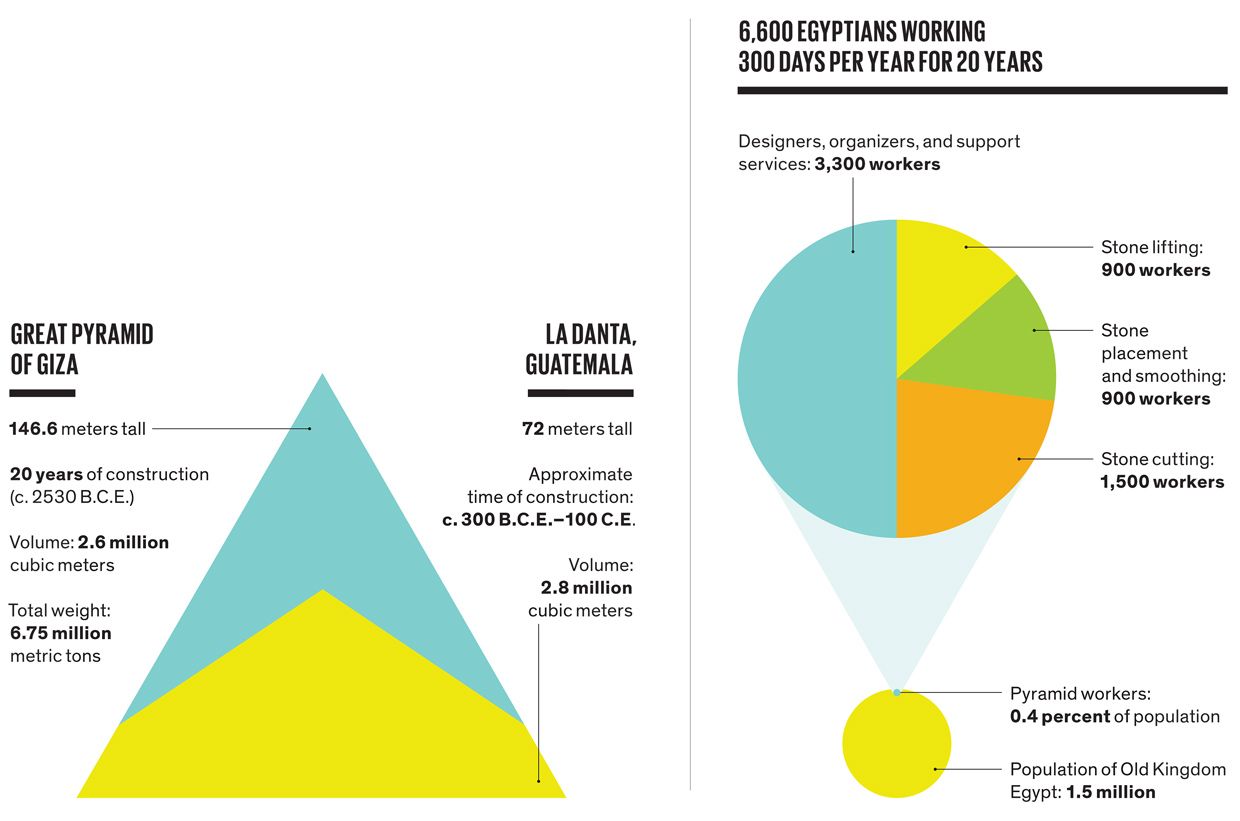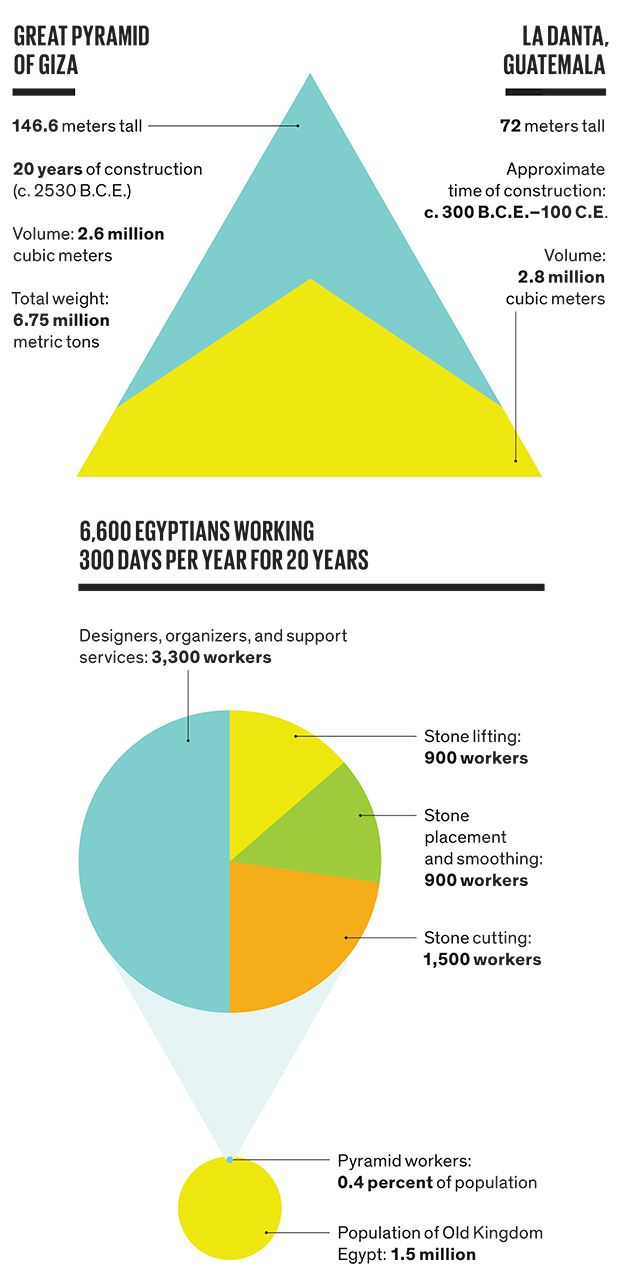How Many People Did it Take to Build the Great Pyramid?
 Image: Patra Kongsirimongkolchai/EyeEm/Getty Images
Image: Patra Kongsirimongkolchai/EyeEm/Getty Images Given that some 4,600 years have elapsed since the completion of the Great Pyramid of Giza, the structure stands remarkably intact. It is a polyhedron with a regular polygon base, its volume is about 2.6 million cubic meters, and its original height was 146.6 meters, including the lost pyramidion, or capstone. We may never know exactly how the pyramid was built, but even so, we can say with some confidence how many people were required to build it.
We must start with the time constraint of roughly 20 years, the length of the reign of Khufu, the pharaoh who commissioned the construction (he died around 2530 B.C.E.). Herodotus, writing more than 21 centuries after the pyramid's completion, was told that labor gangs totaling 100,000 men worked in three-month spells a year to finish the structure in 20 years. In 1974, Kurt Mendelssohn, a German-born British physicist, put the labor force at 70,000 seasonal workers and up to 10,000 permanent masons.
These are large overestimates; we can do better by appealing to simple physics. The potential energy of the pyramid-the energy needed to lift the mass above ground level-is simply the product of acceleration due to gravity, mass, and the center of mass, which in a pyramid is one-quarter of its height. The mass cannot be pinpointed because it depends on the specific densities of the Tura limestone and mortar that were used to build the structure; I am assuming a mean of 2.6 metric tons per cubic meter, hence a total mass of about 6.75 million metric tons. That means the pyramid's potential energy is about 2.4 trillion joules.
To maintain his basal metabolic rate, a 70-kilogram (154-pound) man requires some 7.5 megajoules a day; steady exertion will raise that figure by at least 30 percent. About 20 percent of that increase will be converted into useful work, which amounts to about 450 kilojoules a day (different assumptions are possible, but they would make no fundamental difference). Dividing the potential energy of the pyramid by 450 kJ implies that it took 5.3 million man-days to raise the pyramid. If a work year consists of 300 days, that would mean almost 18,000 man-years, which, spread over 20 years, implies a workforce of about 900 men.
Sweat Equity Sheer human muscle can raise a great pyramid because most of the mass is near the bottom and the work can be divided among thousands of people and distributed over decades. It was thus no great drain on national resources-and think of the spin-off effects!

A similar number of workers might be needed to place the stones in the rising structure and then to smooth the cladding blocks (many interior blocks were just rough-cut). And in order to cut 2.6 million cubic meters of stone in 20 years, the project would have required about 1,500 quarrymen working 300 days a year and producing 0.25 cubic meter of stone per capita. The grand total of the construction labor would then be some 3,300 workers. Even if we were to double that number to account for designers, organizers, and overseers and for labor needed for transport, tool repair, the building and maintenance of on-site housing, and cooking and laundry work, the total would be still less than 7,000 workers.
During the time of the pyramid's construction, the total population of the late Old Kingdom was 1.5 million to 1.6 million people, and hence such a labor force would not have been an extraordinary imposition on the country's economy. The challenge was to organize the labor, plan an uninterrupted supply of building stones, and provide housing, clothing, and food for labor gangs on the Giza site.
In the 1990s, archaeologists uncovered a cemetery for workers and the foundations of a settlement used to house the builders of the two later pyramids at the site, indicating that no more than 20,000 people lived there. That an additional two pyramids were built in rapid succession at the Giza site (for Khafre, Khufu's son, starting at 2520 B.C.E., and for Menkaure, starting 2490 B.C.E.) shows how quickly early Egyptians mastered the building of pyramids: The erection of those massive structures became just another series of construction projects for the Old Kingdom's designers, managers, and workers. If you build things, it becomes easier to build things-a useful lesson for those who worry about the sorry state of our infrastructure.
This article appears in the June 2020 print issue as Building the Great Pyramid."